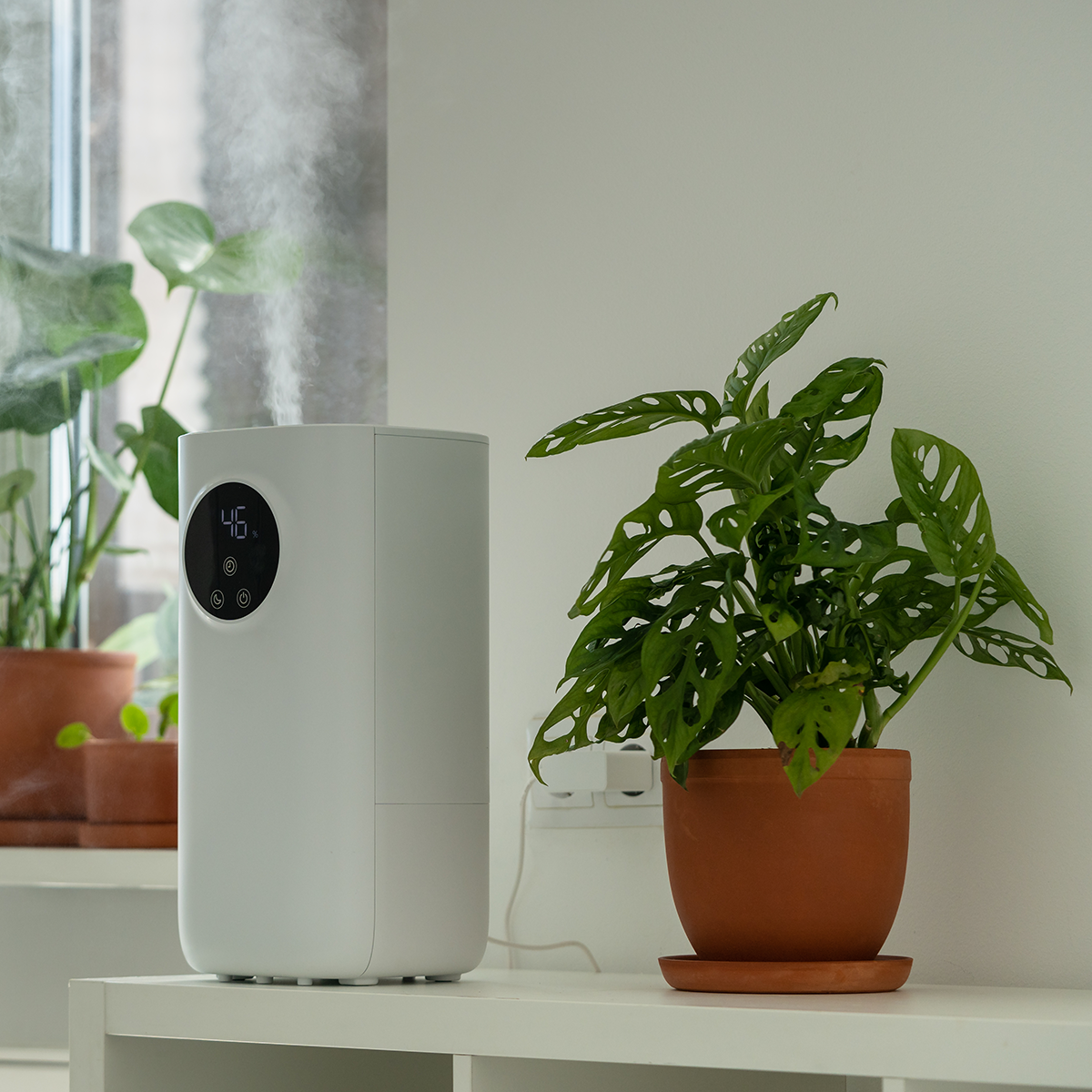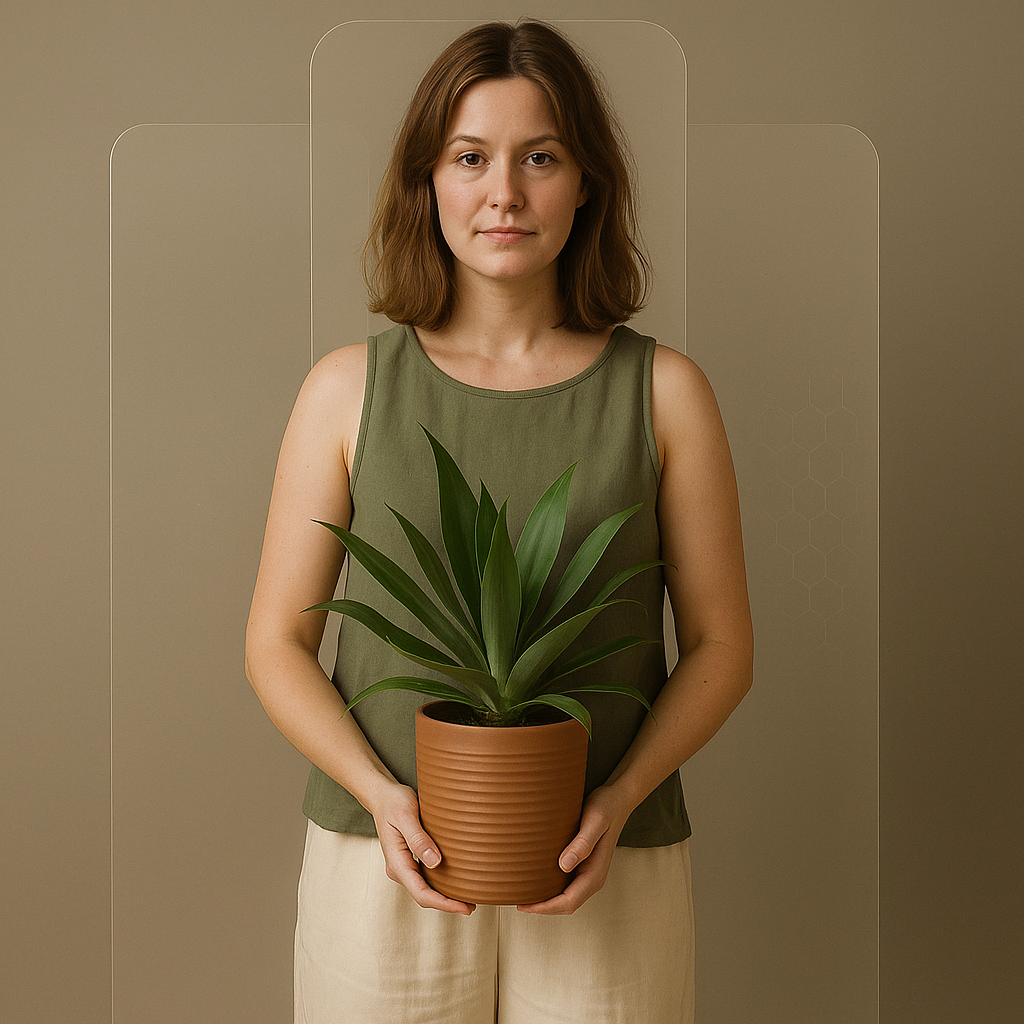Air Quality, Temperature and Humidity

Air Quality, Temperature, and Humidity: Their Impact on Skin Health and the Role of a Humidifier
Air, air quality, temperature, and humidity are factors we sometimes overlook in our daily lives, yet they have a significant impact on our skin health. The skin, the body’s largest organ, serves as a protective barrier against the external environment. Its ability to perform this role effectively depends heavily on the conditions it’s exposed to, particularly the air around us. In this post, we’ll explore how air quality, temperature, and humidity influence skin health and why a humidifier can be a valuable addition to a skincare routine.
We’ll examine how dry indoor air can weaken the skin’s barrier, leading to cracks, and how polluted urban air can hasten aging. Read on for a detailed look at how your environment affects your skin and what steps you can take to support it.
1. The Skin as a Barrier and Why the Environment Matters
The skin is more than just a covering for the body—it’s a living, active tissue with multiple layers and complex functions. The outermost layer, known as the stratum corneum, acts as the primary barrier. Picture the skin as a wall, with skin cells as bricks and lipids (fats) as the mortar holding them together. This barrier shields the body from bacteria, viruses, and environmental threats while locking in moisture and essential substances.
The strength and effectiveness of this “wall” depend on both genetics and external factors like air quality, temperature, and humidity. Low humidity, for instance, increases the risk of moisture escaping from the skin through a process called trans-epidermal water loss (TEWL). Similarly, polluted air can cause oxidative stress, leading to inflammation and speeding up aging.
2. The Role of Air Quality for the Skin
While it’s widely known that air quality affects our lungs, fewer people realize that the skin also interacts directly with the air. In polluted environments—filled with exhaust fumes, particulate matter, or industrial smoke—tiny particles can penetrate the skin’s outer layer, triggering inflammation and stressing cells. Studies show that some pollutants degrade collagen and elastin, the proteins responsible for skin firmness and elasticity.
In urban areas with persistent air pollution, skin problems like redness, acne, or a dull complexion are more common. The skin may produce excess sebum to protect itself, potentially causing blackheads or pimples. Cleaner air, by contrast, places less strain on the skin barrier, which may explain why people in natural or coastal settings often have calmer, less irritated skin.
3. Temperature and the Skin’s Reactions
Temperature extremes—whether cold or hot—can challenge the skin. In cold climates, common in northern Europe, low temperatures and harsh winds can cause stinging cheeks, chapped lips, and constricted blood vessels as the body conserves heat. This reduced blood flow limits nutrient and oxygen delivery to the skin, potentially diminishing its quality over time. Cold air also tends to be dry, exacerbating moisture loss.
In warmer climates, the skin’s sebaceous glands may ramp up sebum production to combat dehydration. In hot, low-humidity conditions, sweat evaporates quickly, drying the skin’s surface. Heat and sweat can also clog pores, raising the risk of pimples. While ideal temperatures vary individually, the skin’s barrier typically functions best in a stable, slightly cool climate, avoiding extremes of heat or cold.
4. Why Humidity Is Crucial
Humidity—the amount of moisture in the air—plays a key role in maintaining the skin’s hydration. In low-humidity environments, moisture escapes from the skin into the air, a process driven by the difference in water content between the skin and its surroundings. Composed largely of water and lipids, the skin can become chapped, irritated, or cracked if this loss persists, known as trans-epidermal water loss (TEWL).
In a Nordic winter, for example, cold outdoor air and heated indoor spaces create dry conditions. Radiators and underfloor heating further reduce indoor humidity, prompting immediate skin reactions like itching or dryness, sometimes even eczema. In summer, higher humidity often leaves the same skin softer and more hydrated, highlighting the air’s influence.
5. How a Humidifier Can Help
A humidifier increases indoor humidity by releasing water vapor or tiny droplets into the air. This reduces the moisture gap between the skin and the environment, slowing water loss and helping the skin retain its natural hydration. This is particularly beneficial for those with dry skin, eczema, or sensitivity worsened by dry air.
However, a humidifier must be kept clean. A neglected device can disperse bacteria or mold spores, harming both skin and respiratory health. With proper maintenance, it becomes a powerful ally in a skincare routine, especially in winter or arid climates.
6. Air Quality, Pollutants, and Humidity
In polluted cities, dry air combines with particles, chemicals, and irritants to stress the skin, causing inflammation and premature aging. While a humidifier can’t remove pollutants, pairing it with good ventilation or an air purifier can create a more skin-friendly environment. In poorly ventilated, heated offices, adding humidity can ease dryness-related irritation and fatigue, though regular cleaning is essential to avoid dust buildup.
7. How the Skin’s Functions Are Affected by Humidity and Temperature
The skin regulates temperature, defends against pathogens, and senses touch. It manages body heat through blood flow and sweat, but dry or harsh conditions can impair these functions. A hydrated skin barrier remains flexible and intact, resisting bacteria. When dry, tiny cracks can form, increasing the risk of irritation, redness, or infection, potentially leading to eczema or fungal issues.
8. Lifestyle Habits That Interact with Humidity
Beyond humidifiers, lifestyle choices like diet, hydration, skincare products, and hot showers affect skin moisture. Sitting in a dry, warm room, drinking little water, and overusing hot water can worsen dryness. Balancing these factors with mindful care complements the benefits of humid air.
9. Differences Between Skin Types
Skin types respond differently to environmental conditions. Oily skin may tolerate dry air better, while dry or sensitive skin struggles with itching and redness. Those with eczema or barrier damage are especially vulnerable, benefiting greatly from humidity and tailored skincare. Needs also shift with seasons, age, or activities like frequent handwashing.
10. Can You Have "Too Much" Humidity in the Air?
Excessive humidity can foster mold or bacteria growth. A relative humidity of 40 to 60 percent is ideal—moist enough to support skin but not so high as to cause stuffiness. With proper humidifier care and monitoring (using a hygrometer), maintaining this range is straightforward.
11. Additional Tips for Retaining Skin Moisture
Pairing a humidifier with smart habits boosts skin health. Consider these tips:
- Limit hot showers and baths, which strip moisture.
- Apply moisturizer to damp skin after washing.
- Avoid harsh preservatives if sensitive.
- Stay hydrated and consume essential fatty acids (omega-3, omega-6).
- Ventilate regularly and use an air purifier in polluted areas.
12. Humidifier as Part of a Skincare Routine
Though not a traditional skincare product, a humidifier enhances the effectiveness of creams and serums by keeping the skin barrier hydrated. It prevents moisture loss overnight or during the day, reducing tightness. Options like ultrasonic, steam, or evaporative humidifiers suit different preferences, with the goal of maintaining optimal humidity.
13. Summary and Future Outlook
Skincare extends beyond products to the air we live in. In the Nordics, dry winters and heated homes often leave skin tight and irritated, making humidifiers a practical solution. As awareness grows, indoor air quality may become a broader focus, influencing design and workplace standards. Skin health is holistic—air, diet, and care all matter. A humidifier isn’t a cure-all, but it’s a simple step to support resilient, radiant skin, especially in dry conditions.




Comments